Frequently Asked Questions about Psoriasis
WHAT IS PSORIASIS?
Psoriasis is a common but chronic skin condition that causes
inflammation and scaling (red elevated patches and flaking silvery
scales). The patches can be itchy or sore, causing discomfort and pain.
Psoriasis causes skin cells to rise to the surface and shed at a very
rapid rate. On average, people with psoriasis shed their skin cells
every 3 to 4 days, while people without the condition have a turnover
rate of about every 30 days.1,2,3,4
TYPES OF PSORIASIS
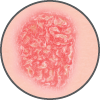 |
Plaque – Plaque psoriasis is the most common form of the condition and affects about 90% of people living with psoriasis. It causes raised, red, dry lesions or plaques that dry and flake off. |
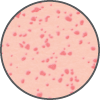 |
Guttate – Guttate psoriasis is the second most common form of the condition and affects about 10% of psoriasis sufferers. It is usually found in young adults and children and triggered by a bacterial infection like strep throat. |
 |
Inverse – Inverse psoriasis is identified by smooth red lesions that may appear shiny. Inverse psoriasis shows up in the skin folds where there is friction and sweat, most commonly in the armpits, in the groin, around genitals, and under the breasts. |
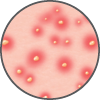 |
Pustular – Pustular psoriasis typically causes small, pus-filled blisters which then dry out and form scales. The blisters, or pustules, can affect a small area of the body (localized), or a large one (generalized). |
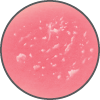 |
Erythrodermic – Erythrodermic psoriasis is a rare but severe form of the condition that affects a large part of the body and causes a red, peeling rash. This form of the condition often has to be treated in the hospital. |
WHAT CAUSES PSORIASIS?
 |
Scientists to not know exactly why people get psoriasis, but it seems to be linked to the immune system and genetics.3 |
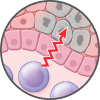 |
People with psoriasis have an overactive immune system, causing T cells to attack healthy skin cells by mistake, instead of fighting off viruses or bacteria. These overactive T cells cause skin to turn over too quickly, and trigger psoriasis.5 |
